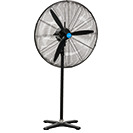How to Calculate Bund Capacity To Meet Australian Standards
Date Posted:5 September 2025
Learn how to calculate bund capacity correctly under Australian Standards. Protect workers, avoid costly fines, and ensure environmental compliance with simple, clear steps.
Verdex Insights: At a Glance
-
The Challenge: Many Australian workplaces underestimate the importance of correct bund capacity, leading to non-compliance with WHS and EPA regulations. Miscalculations can result in spills, environmental contamination, and costly fines.
-
The Insight: Bunding must hold at least 110% of the largest tank or the highest calculated volume based on AS 1940-2004. Correct bund capacity prevents leaks from reaching drains or soil, protects workers from chemical exposure, and ensures legal compliance.
-
The Verdex Solution: Verdex supplies compliant bunding systems, spill pallets, portable bunds, and drum handling equipment for industrial, logistics, and manufacturing sites. Our solutions help businesses meet WHS and environmental standards while maintaining safe, sustainable operations.
Why Bund Capacity Matters
Bunding is a safety measure used to contain hazardous liquids in case of spills or leaks. It involves a barrier or containment area (known as a bund) that surrounds tanks, drums or IBCs to capture any escaping fluid.
While often overlooked, correct bund capacity is vital for:
-
Workplace safety – Prevents slip hazards, fire risks, and chemical exposure
-
Environmental protection – Stops pollutants from reaching drains or soil
-
Legal compliance – Fulfils obligations under WHS and EPA regulations
In Australia, the commonly referenced AS 1940-2004 standard and the 110% Rule are often misunderstood. Many workplaces miscalculate bund volume, risking non-compliance and heavy penalties.

What Is Bund Capacity?
Bund capacity refers to the maximum volume of liquid a bund can safely contain during a spill. This isn’t just the total internal volume of the bund, but a compliance-driven figure based on:
-
The size and number of containers within the bund
-
The type of liquid stored
-
Displacement caused by the tanks themselves
Put simply, bund capacity must ensure enough room remains available to fully capture a spill, even when containers occupy part of the bund’s volume.
How to Calculate the Correct Bund Capacity
To meet compliance requirements (especially under AS 1940), you must calculate bund capacity using the most conservative volume from the following scenarios:
1. 110% of the largest single tank
This is the most commonly applied rule.
Example:
-
A tank holds 1,000L
-
The bund must hold at least 1,100 litres (1,000L x 110%)
This ensures that a complete spill from the biggest tank doesn’t overflow the bund.
For drum storage, using drum trolleys and lifters with bunded pallets ensures safer handling and compliance with these rules.
2. 110% of interconnected tanks
If two or more tanks are connected and could all leak at once, you must treat them as a single unit.
Example:
-
Three linked tanks: 600L + 500L + 400L = 1,500L
-
Bund must hold 1,650 litres (1,500L x 110%)
This accounts for the worst-case scenario of a simultaneous failure.
3. 25% of the total volume of all tanks
This rule applies when multiple tanks are not connected, and you’re looking at total site risk.
Example:
-
Total stored volume: 4,000L
-
Required bund capacity = 1,000 litres (25% of 4,000L)
Compare this with the other methods—always choose the largest resulting value.
4. Volume of largest tank + 20 minutes of sprinkler flow
If your facility has a fire sprinkler system, this must be factored in.
Example:
-
Largest tank: 800L
-
Sprinkler flow rate: 50L/min
-
20 mins x 50L = 1,000L
-
Required bund = 800L + 1,000L = 1,800 litres
This allows for emergency runoff that would otherwise overflow the bund.
Don’t Forget Displacement
The tanks, drums or IBCs sitting inside your bund take up space, reducing how much liquid the bund can actually hold. You must add this displaced volume to your calculations to ensure compliance. Our drum storage and bunding options are designed with this in mind, giving you reliable capacity without compliance risks.
Example:
-
Bund internal volume = 1,200L
-
Tank occupies 150L of space
-
Effective bund capacity = 1,050L, which may not meet the 110% requirement

Factors That Affect Bund Capacity Selection
Several site-specific factors influence the bund capacity you need:
-
Type of liquid – Oils, fuels, acids, and chemicals have different risks and reactivity
-
Indoor vs outdoor – Outdoor bunds may need extra volume for rainfall or UV degradation
-
Temperature changes – Liquids can expand in heat, increasing spill risk
-
Container types – Drums, IBCs, and tanks all have different spill profiles
-
Fire safety systems – Sprinklers add significant runoff that must be captured
Using the right forklift drum handling equipment also reduces the risk of damage and leaks during transport.
Common Mistakes to Avoid
Avoid these frequent bunding errors:
-
Only using 100% of tank volume (not 110%)
-
Ignoring displacement caused by container size
-
Overlooking sprinkler discharge in fire-rated areas
-
Failing to apply interconnected tank rules
-
Misapplying the 25% rule as a default rather than comparing all methods
These mistakes can lead to regulatory fines, increased spill damage, and WHS breaches.
Tips for Choosing the Right Bunding Products
Verdex offers a wide range of bunding solutions to suit different storage needs:
-
Portable bunds – Lightweight and ideal for field work or mobile storage
-
Spill pallets – Compact, compliant storage for drums or IBCs
-
Rubber or flexible floor bunding – Great for permanent warehouse setups
-
Custom bunds – Designed for your exact tank sizes and site layout
Stay Compliant: Know the Australian Standard (AS 1940-2004)
The AS 1940-2004 – The storage and handling of flammable and combustible liquids outlines bunding requirements across a range of substances and container types. It emphasises secondary containment, spill capture, and fire protection. Always cross-check with your local EPA and WHS regulations, as regional requirements may vary.
Get Bunding Right the First Time with Verdex
Correct bund capacity isn’t just a good practice, it’s a legal requirement. Understanding how to calculate and apply the correct bund volume protects your staff, your business, and the environment. For help navigating standards and choosing the right bunding, reach out to Verdex, your trusted partner in workplace safety.
At Verdex, we supply compliant drum handling equipment and bunding solutions to help businesses manage spills and stay compliant and environmentally responsible. Whether you need spill pallets, or expert advice, our team can help.
-
Email us at sales@verdex.com.au
-
Or fill out our online contact form
Frequently Asked Questions
What is bund capacity?
Bund capacity is the total amount of liquid that a containment area (bund) can hold in the event of a spill. It ensures leaks from tanks or drums don’t escape into the environment or workspace.
What is the 110% rule for bunding?
The 110% rule means your bund must hold at least 110% of the volume of the largest tank stored within it. This is a key guideline under AS 1940 and helps ensure full containment in a worst-case spill.
Why is bund capacity important?
It’s critical for safety, environmental protection, and legal compliance. Inadequate bunding can lead to hazardous spills, WHS breaches, and large fines from environmental regulators.
Do I need to include the volume displaced by tanks sitting inside the bund?
Yes. Tanks and drums take up space inside the bund. You must factor in their displacement volume to ensure the bund still has enough room to contain a full spill.
What is AS 1940 and how does it relate to bunding?
AS 1940 is the Australian Standard for storing flammable and combustible liquids. It outlines bunding requirements, including minimum volume calculations, fire safety, and maintenance procedures.
































































































































 Trolleys & Hand Trucks
Trolleys & Hand Trucks Cage Trolleys
Cage Trolleys Cleaning Carts & Trolleys
Cleaning Carts & Trolleys Construction Trolleys
Construction Trolleys Custom Trolleys
Custom Trolleys Hand Trucks & Dollies
Hand Trucks & Dollies Laundry/Linen Trolleys
Laundry/Linen Trolleys Lifting Trolleys
Lifting Trolleys Order Picking Trolleys
Order Picking Trolleys Panel Cart Trolleys
Panel Cart Trolleys Platform Trolleys
Platform Trolleys Powered Trolleys
Powered Trolleys Shelf & Tiered Trolleys
Shelf & Tiered Trolleys Shopping Trolleys
Shopping Trolleys Stainless Steel Trolleys
Stainless Steel Trolleys Tool Trolleys
Tool Trolleys Utility & Service Carts
Utility & Service Carts Lifting & Handling Equipment
Lifting & Handling Equipment Forklift Attachments
Forklift Attachments Jib Attachments
Jib Attachments Lifting Hoists & Pallet Hooks
Lifting Hoists & Pallet Hooks Load Skates & Tow Tugs
Load Skates & Tow Tugs Manual Stackers & Lifters
Manual Stackers & Lifters Pallet Jacks
Pallet Jacks Pallet Lifters
Pallet Lifters Pallet Rotators & Dispenser
Pallet Rotators & Dispenser Powered Pallet Trucks & Electric Lifters
Powered Pallet Trucks & Electric Lifters Scissor Lift Trolleys and Tables
Scissor Lift Trolleys and Tables Conveyor Equipment
Conveyor Equipment Conveyor Frames & Stands
Conveyor Frames & Stands Roller & Skate Conveyors
Roller & Skate Conveyors Ladders & Access Equipment
Ladders & Access Equipment Container & Yard Ramps
Container & Yard Ramps Ladders & Step Stools
Ladders & Step Stools Work Platforms & Crane Cages
Work Platforms & Crane Cages Drum Handling Equipment
Drum Handling Equipment Drum Storage & Bunding
Drum Storage & Bunding Drum Trolleys & Lifters
Drum Trolleys & Lifters Forklift Drum Handling
Forklift Drum Handling Waste Handling & Bins
Waste Handling & Bins Bin Lifters & Tippers
Bin Lifters & Tippers Plastic Waste & Wheelie Bins
Plastic Waste & Wheelie Bins Steel Waste & Tipping Bins
Steel Waste & Tipping Bins Waste Carts
Waste Carts Dangerous Goods Storage & Spillage
Dangerous Goods Storage & Spillage Aerosol Cans Storage Cages
Aerosol Cans Storage Cages Bunded Pallets & Storage
Bunded Pallets & Storage Corrosive Goods Storage Cabinets
Corrosive Goods Storage Cabinets DG Storage & Trolleys
DG Storage & Trolleys Flammable Liquid Cabinets
Flammable Liquid Cabinets Forklift Gas Storage Cages
Forklift Gas Storage Cages Site Storage
Site Storage Spill Kits
Spill Kits Shelving & Storage Equipment
Shelving & Storage Equipment Stillage & Transport Cages
Stillage & Transport Cages 750 Series Cage Configurations
750 Series Cage Configurations Heavy Duty Cabinets
Heavy Duty Cabinets Heavy Duty Shelving
Heavy Duty Shelving Mega Bins & Pallets
Mega Bins & Pallets Packing & Workbenches
Packing & Workbenches Parts Trays & Stor-Pak Bins
Parts Trays & Stor-Pak Bins Pegboard & Louvre Panels
Pegboard & Louvre Panels Plastic Bins & Crates
Plastic Bins & Crates Plastic Handling Solutions Bins
Plastic Handling Solutions Bins Plastic Pallets
Plastic Pallets Stack & Nest Bins
Stack & Nest Bins Pallet Racking Accessories
Pallet Racking Accessories Workplace Equipment
Workplace Equipment Modular Workbenches
Modular Workbenches Electric Height-Adjustable Workbenches
Electric Height-Adjustable Workbenches Floor Matting
Floor Matting General Workplace Equipment
General Workplace Equipment Industrial Weighing Scales
Industrial Weighing Scales Packaging Machinery
Packaging Machinery Stationery Cupboards
Stationery Cupboards Storage and Stillage Cages
Storage and Stillage Cages Tool Trolleys
Tool Trolleys Tooling Cabinets
Tooling Cabinets Workshop Fans and Coolers
Workshop Fans and Coolers Safety Barriers, PPE & Signage
Safety Barriers, PPE & Signage Barriers & Bollards
Barriers & Bollards First Aid Equipment
First Aid Equipment Gloves, Knives and PPE
Gloves, Knives and PPE Signage
Signage Cleaning & Site Supplies
Cleaning & Site Supplies Cleaning Equipment
Cleaning Equipment Cleaning Trolleys
Cleaning Trolleys Rubbish Bins
Rubbish Bins Signs & Traffic Supplies
Signs & Traffic Supplies Construction Equipment
Construction Equipment Construction Trolleys
Construction Trolleys Waste Handling
Waste Handling General Site Equipment
General Site Equipment Concrete Equipment
Concrete Equipment Site Storage
Site Storage Lifting Equipment
Lifting Equipment Verdex Specials
Verdex Specials









